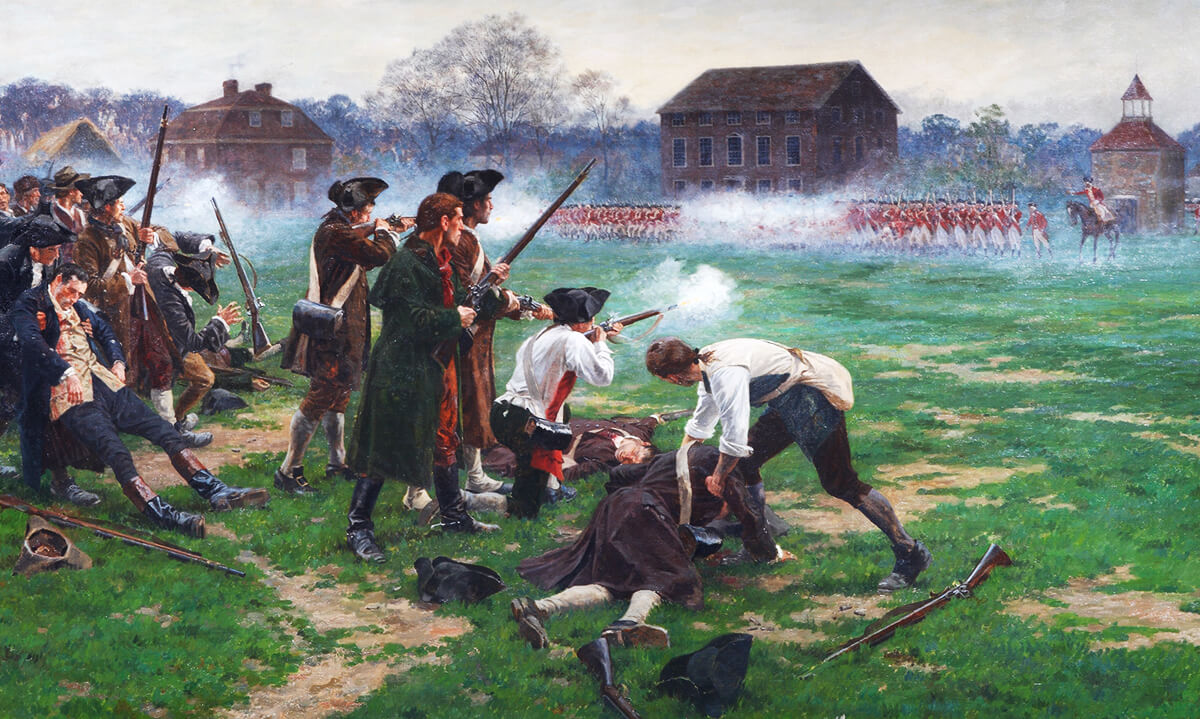 If you answered John Quincy Adams (the earliest serving President to have a photograph taken of him), then you were right!
If you answered John Quincy Adams (the earliest serving President to have a photograph taken of him), then you were right!
Born on July 11, 1767, to John Adams and Abigail Adams, 1 by the age of eight he had not only trained with the famous Massachusetts Minutemen 2 and watched the British attack Boston,3 but by the age of 11, he was serving as a secretary to his father, who was the U.S. diplomat to France; 4 at the age of 14, he was sent to be secretary and translator for Francis Dana, American diplomat in the Court of Queen Catherine the Great in Russia;5 and at the age of 15, he was an official secretary for the American delegation negotiating the final peace treaty to end the American War for Independence.6
This amazing youngster became a diplomat under President George Washington 7 (whom Washington described as “the most valuable public character we have abroad”), 8 and served in the same position under several other presidents. 9
He was also a U. S. Senator, a Secretary of State,10 was appointed to the U. S. Supreme Court (but declined the position), 11 and became the sixth President of the United States. 12
In fact, he was the only president in American history who served in the U. S. House of Representatives after finishing his term as president (he served for 17 years in that position!).13
Throughout his time in the House, he was known as the “Hell Hound of Abolition” for his relentless pursuit of that object, as well as “Old Man Eloquent” for his mastery of the spoken language 14 — not surprising since he had previously been a professor of oratory and rhetoric at Harvard. 15
But before serving in the House, while Ambassador to Russia under President James Madison in 1811, he wrote nine letters to his ten-year-old son, George Washington Adams (whom he had named after his friend and mentor, George Washington), instructing him on how to read through the Bible once each year. As he explained to his young son, his purpose for those letters was “the inculcation of a love and reverence for the Holy Scriptures, and a delight in their perusal and study.”16
In his first letter, he told young George:
I have myself, for many years, made it a practice to read through the Bible once every year. I have always endeavored to read it with the same spirit and temper of mind, which I now recommend to you: that is, with the intention and desire that it may contribute to my advancement in wisdom and virtue. 17
 Shortly after John Quincy’s death on the floor of the House of Representatives in 1848, those nine letters were quickly printed as a book for all of America’s youth, 18 so that they, too, could learn how to read through the Bible once each year, and understand it. That work was so popular that it went through a number of reprints, and is still in print today (and it is worthwhile for all Americans to read today, regardless of their age).
Shortly after John Quincy’s death on the floor of the House of Representatives in 1848, those nine letters were quickly printed as a book for all of America’s youth, 18 so that they, too, could learn how to read through the Bible once each year, and understand it. That work was so popular that it went through a number of reprints, and is still in print today (and it is worthwhile for all Americans to read today, regardless of their age).
Not only was John Quincy’s faith evident throughout his family letters but also in his published works — such as his poetry. Interestingly, Adams was one of only a handful of poet presidents, and his strong Biblical faith is repeatedly demonstrated in his poems. In fact, his 1848 work, Poems of Religion and Society includes poems on the Sabbath, the Goodness of God, and many more Christian topics.
Interestingly, when admirers — particularly young ones — wrote this famous American asking for his autograph, he would often sent them a piece of original poetry he had composed for them based on one of the Psalms from the Bible. In fact, WallBuilders recently posted one such handwritten Psalm transcribed by John Quincy Adams.
Adams, who spent more than six decades of his life in public service, was known as a man “devoted to serving rather than pleasing his countrymen” 19 – that is, he was driven by principle, not by what others thought, understanding that his eternal destiny was more important than his momentary popularity. He maintained this principled position, even when it meant confronting his own family. For example, as his father, John Adams, was growing old, and late in life began to depart from the Christian orthodoxy that had characterized his earlier years, questioning even the Divinity of Christ and a belief in the Trinity, John Quincy pointedly told his father:
My hopes of a future life are all founded upon the Gospel of Christ and I cannot cavil or quibble away [evade or object to]. . . . the whole tenor of His conduct by which He sometimes positively asserted and at others countenances [permits] His disciples in asserting that He was God. 20
As we honor the birthday of one of America’s greatest statesmen, let us also rely on the same Hope in which he trusted and even model our life after John Quincy Adams’ personal life motto, described by nineteenth century historian Elbridge Brooks as:
Duty is ours, and the results are God’s 21
Endnotes
1 Francis S. Drake, Dictionary of American Biography (Boston: Houghton, Osgood & Company, 1879), p. 7, s.v. “John Quincy Adams.”See also, “John Quincy Adams Biography,” National Park Service (accessed July 17, 2013).
2 John Quincy Adams, Memoirs of John Quincy Adams, Comprising Portions of His Diary From 1795 to 1848, Charles Francis Adams, editor (Philadelphia: J.B. Lippincott & Co., 1875), Vol. VII, p. 325.
3 John Quincy Adams, Memoirs of John Quincy Adams, Comprising Portions of His Diary From 1795 to 1848, Charles Francis Adams, editor (Philadelphia: J.B. Lippincott & Co., 1874), Vol. I, pp. 4-6.
4 William H. Seward, The Life and Public Services of John Quincy Adams, Sixth President of the United States, with the Eulogy Delivered Before the Legislature of New York (Auburn: Derby, Miller, and Company, 1849), pp. 30-32. See also, Sketch of the Life of John Quincy Adams; Taken from the Port Folio of April, 1819 (1824), p. 4.
5 John Quincy Adams, Memoirs of John Quincy Adams, Comprising Portions of His Diary From 1795 to 1848, Charles Francis Adams, editor (Philadelphia: J.B. Lippincott & Co., 1874), Vol. I, p. 12.
6 Memoirs of John Quincy Adams (Philadelphia: J.B. Lippincott & Co, 1874), Vol. I, p. 13. See also, “Biographies of the Secretaries of State: John Quincy Adams,” U.S. Department of State: Office of the Historian (accessed on July 15, 2013).
7 “Adams, John Quincy,” Biographical Directory of the United States Congress (accessed on July 11, 2013).
8 George Washington, Correspondence Between the Honorable John Adams, Late President of the United States and the Late Wm. Cunningham, Esq. (Boston: E.Q. Cunningham, 1823), pp. 37-38, To John Adams February 20, 1797.
9 “Adams, John Quincy,” Biographical Directory of the United States Congress (accessed on July 11, 2013).
10 “Adams, John Quincy,” Biographical Directory of the United States Congress (accessed on July 11, 2013).
11 Dictionary of American Biography, Allen Johnson, editor (New York: Charles Scribner’s Sons, 1928), Vol. I, p. 85.
12 “Adams, John Quincy,” Biographical Directory of the United States Congress (accessed on July 11, 2013).
13 “The Election of John Quincy Adams of Massachusetts,” United States House of Representatives: History, Art, & Archives (accessed July 17, 2013). See also,“Adams, John Quincy,” Biographical Directory of the United States Congress (accessed on July 11, 2013).
14 Francis S. Drake, Dictionary of American Biography (Boston: Houghton, Osgood & Company, 1879), p. 8, s.v. “John Quincy Adams.”
15 Sketch of the Life of John Quincy Adams; Taken from the Port Folio of April, 1819 (1824), p. 10.
16 John Quincy Adams, Letters of John Quincy Adams to His Son on the Bible and its Teachings (Auburn, N.Y: Derby, Miller, & Co., 1848), pp. 6-7.
17 John Quincy Adams, Letters of John Quincy Adams to His Son on the Bible and its Teachings (Auburn, N.Y: Derby, Miller, & Co., 1848), pp. 10-11.
18John Quincy Adams, Letters of John Quincy Adams to His Son on the Bible and its Teachings (Auburn, N.Y: Derby, Miller, & Co., 1848), pp. 5-8.
19 John Quincy Adams, Letters of John Quincy Adams to His Son on the Bible and its Teachings (Auburn, N.Y: Derby, Miller, & Co., 1848), p. 6.
20 John Quincy Adams, The Writings of John Quincy Adams, Worthington Chauncey Ford, editor (New York: The MacMillan Company, 1916), Vol. VI, p. 135, Letter to John Adams, January 3, 1817.
21 Elbridge S. Brooks, Historic American: Sketches of the Lives and Characters of Certain Famous Americans Held Most in Reverence by the Boys and Girls of America, For Whom Their Stories Here Are Told (New York: Thomas Y. Crowell & Co. Publishers, 1899), pp. 208-209.
Still looking for answers? Visit our FAQ page
More Resources
Know the Truth and Protect Your Freedoms.
Still looking for answers? Visit our FAQ page
Stay Informed with the Latest Resources
Enter your email address to receive our regular newsletter, with important information and updates right in your inbox!










